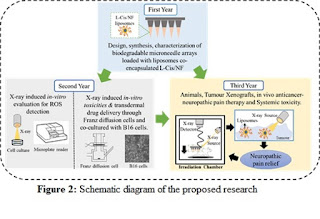PHENYTOIN
Phenytoin is an antiepileptic drug which can be useful in the treatment of epilepsy. The primary site of action appears to be the motor cortex where spread of seizure activity is inhibited. Phenytoin reduces the maximal activity of brain stem centers responsible for the tonic phase of tonic-clonic (grand mal) seizures. Phenytoin acts to dampen the unwanted, runaway brain activity seen in seizure by reducing electrical conductance among brain cells. It lacks the sedation effects associated with phenobarbital. There are some indications that phenytoin has other effects, including anxiety control and mood stabilization, although it has never been approved for those purposes by the FDA. Phenytoin is primarily metabolized by CYP2C9.
MECHANISM OF ACTION
Phenytoin acts on sodium channels on the neuronal cell membrane, limiting the spread of seizure activity and reducing seizure propagation. By promoting sodium efflux from neurons, phenytoin tends to stabilize the threshold against hyperexcitability caused by excessive stimulation or environmental changes capable of reducing membrane sodium gradient. This includes the reduction of post-tetanic potentiation at synapses. Loss of post-tetanic potentiation prevents cortical seizure foci from detonating adjacent cortical areas.
SIDE EFFECT
hives;
difficulty breathing;
_swelling of your face, lips, tongue, or throat. fever, swollen glands, sore throat, trouble breathing, painful mouth sores, sores around your eyes;
•skin rash, easy bruising or bleeding, severe weakness;
•severe muscle pain;
•nausea, vomiting, upper stomach pain, loss of appetite, dark urine, jaundice (yellowing of the skin or eyes);
•bone pain (especially in your hips, legs, or lower back), trouble with walking; or
•severe skin reaction--fever, sore throat, swelling in your face or tongue, burning in your eyes, skin pain, followed by a red or purple skin rash that spreads (especially in the face or upper body) and causes blistering and peeling.
Common phenytoin side effects may include:
•nausea, vomiting, constipation;
•tremors, slurred speech, loss of balance or coordination;
•rash;
•headache;
•confusion, dizziness, nervousness; or
•sleep problems (insomnia).
swelling of your face, lips, tongue, or throat.
USES
used to control seizures
DRUG DRUG INTERACTION
Abiraterone
The serum concentration of Abiraterone can be decreased when it is combined with Phenytoin.
Acenocoumarol
Phenytoin may increase the anticoagulant activities of Acenocoumarol.
Acetaminophen
The serum concentration of Acetaminophen can be decreased when it is combined with Phenytoin.
Acetazolamide
The risk or severity of adverse effects can be increased when Acetazolamide is combined with Phenytoin.
Afatinib
The serum concentration of Afatinib can be decreased when it is combined with Phenytoin.
Albendazole
The serum concentration of the active metabolites of Albendazole can be reduced when Albendazole is used in combination with Phenytoin resulting in a loss in efficacy.
Alfuzosin
The metabolism of Alfuzosin can be increased when combined with Phenytoin.
Alprazolam
The serum concentration of Phenytoin can be increased when it is combined with Alprazolam.
Aminophylline
The serum concentration of Aminophylline can be decreased when it is combined with Phenytoin.
Amiodarone
The serum concentration of Amiodarone can be decreased when it is combined with Phenytoin.
REFERENCE-
ESSENTIAL OF MEDICAL PHARMACOLOGY BY K.D TRIPATHI7th edition pg.no.-412-422


